
Jump to:
The word “Washoku” comes from two characters “和“(“wa”), which literally means harmony, but is often used for all things Japanese, and “食”(shoku), meaning food. Washoku means more than just food eaten in Japan, however, and as we shall see in this blog post, the concept of harmony plays a significant role.
In this article, we will take a deep dive into the world of Washoku, and look at its key concepts, the main ingredients, key Washoku dishes, and different types of Washoku, and compare it with its Western counterpart (as in Western food made in Japan), Yoshoku.
What Are The Key Concepts Of Washoku?
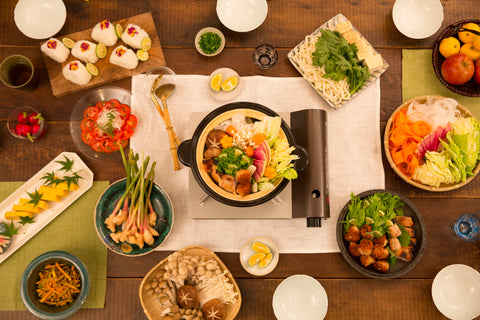
Although, as stated above, the word Washoku literally means “Japanese food”, its meaning is closer to a group of concepts surrounding food, which we will introduce you to in this section.
Seasonality
Japan is blessed with four distinct seasons, and the ingredients in each season are chosen based on which ones are available, and at their freshest and hence in their most nutritious state. Each region of Japan has its own climate and natural features and is blessed with seasonal delicacies from the sea and mountains. The art of Washoku is making the most of these in one’s dishes.
Harmony
As previously mentioned, the “Wa” in Washoku also has the meaning of harmony, and Washoku aims for balance and harmony in all things, including tastes (balancing the five tastes of sweet, salty, sour, bitter, and umami), colors and textures.
Presentation
Related to the concept of harmony in colors, is the goal of food presentation. High value is placed on presenting food in an aesthetically pleasing way. In addition to the coloring of the food, great care is taken in choosing the type and color of serving dishes and utensils.
Use of Fresh, Local Ingredients
Tied in with the concept of seasonality, is the use of fresh, local ingredients that do not require us to impact the environment by bringing them halfway across the world before they get to the meal table. This embodies the concept of “地産地消” (Chisan-chisho), or “local production and local consumption” It also embraces the idea of harmony in terms of the respect of humans for their planet.
What Are The Main Ingredients Of Washoku?
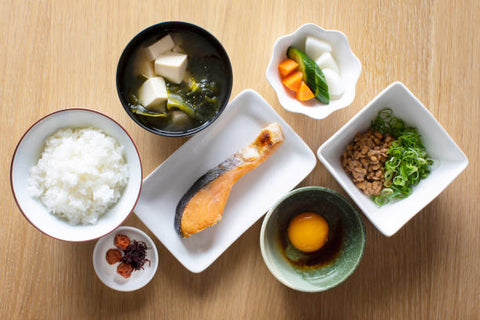
Washoku favors the use of natural ingredients, sourced locally wherever possible, such as rice, meat, fish, vegetables, and other plants, and emphasizes each of the four seasons with its choice of ingredients and the appearance of dishes. So, what are some of the essential elements of Washoku?
Dashi (Broth)
Dashi is the key to flavorful Japanese cuisine. The best dashi broth to use will vary depending on what is on the menu, such as whether they are simmered dishes or miso soup, as well as the type of main ingredients used in the dish.
Dashi can be made from dried shiitake mushrooms, dried bonito flakes, dried sardines, kelp, and vegetable chunks, as well as meat and fish bones. You can also find Dashi made from special ingredients, such as goat on Amami Oshima Island and in the Okinawa region, and soybean dashi used in vegetarian cooking. You can get some ready-made Dashi to use in your cooking here or you can make your own with our recipe.
Seafood
As an island nation surrounded by the sea, Japan has a rich lineup of dishes using seafood, including sashimi, simmered, steamed, and grilled fish, as well as preserved foods such as salted and pickled fish.
Major fish and shellfish used in Japanese cuisine include horse mackerel, conger eel, salmon, trout, flounder, bonito, smelts, tuna, and yellowtail, as well as seaweed such as hijiki and wakame, and shellfish such as scallops and oysters.
Meat
Meat was shunned for centuries in Japan due to its Buddhist culture but has taken root since the Meiji period after it was publicly eaten by the emperor of the time. Although the culture of eating meat is a relatively new one, compared to fish, many meat dishes (to be discussed later) are served in homes and restaurants.
Types of meat used in Japanese cooking include pork, beef (wagyu), chicken, duck, horse, deer, wild boar, bear, rabbit, duck, and quail.
Vegetables, Grains, and Legumes
Vegetables, such as those used in Tempura, Daikon (Japanese giant radish), and grilled eggplant made with seasonal vegetables can also play a starring role in Washoku.
The main vegetables used in Japanese cooking include potatoes, carrots, onions, pumpkins, lotus root, spinach, and radishes. Commonly used legumes include Edamame, Soramame, and kidney beans. Grains include soybeans, azuki beans, and buckwheat, and of course, the most important grain in Washoku is rice, which most Japanese people consume at least once a day.
Fruits
Fruits tend to be enjoyed at the end of a meal, either in raw form, jellied, or part of a Wagashi Japanese sweets.
The main fruits used in Japanese cuisine include persimmons, apricots, apples, tangerines, peaches, kumquats, and pears.
Seasonings and Flavorings
Another inherently important aspect of Washoku is the way that the food is flavored and seasoned. This includes both dark and light soy sauce, Mirin, Miso, rice vinegar, and shichimi (spice mixture based around Japanese chili peppers).
Common Washoku Dishes
After looking at some common ingredients used, this section will look at some common dishes considered representative of Washoku.
Sushi and Sashimi
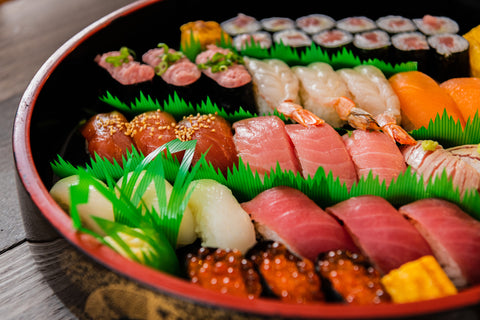
The beautifully colored raw fish, either eaten on its own in the case of Sashimi, or placed on top of vinegared rice in Sushi can be considered the archetypal type of Washoku, using fresh, delicious, and healthy ingredients, and stimulating the appetite through beautiful presentation.
Yakizakana
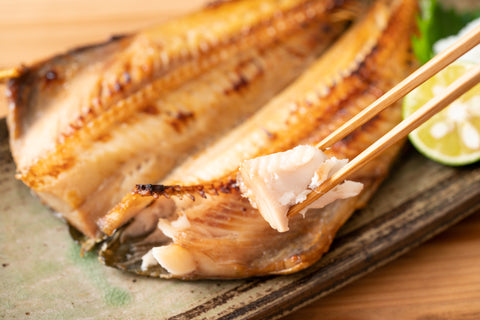
Another common fish dish in Washoku is Yakizakana, which is fish that is seasoned with salt or Teriyaki sauce and then grilled over charcoal, or in a fish grill at home. This is often used as the main protein component of a Washoku meal and its saltiness makes it the perfect accompaniment for rice. Popular types of fish used with Yakizakana are sea bream, horse mackerel, salmon, and cod.
Soba and Udon Noodles
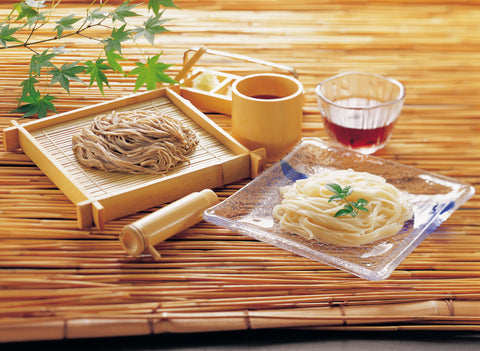
The two main types of Japanese noodles are Soba (buckwheat) and Udon (flour) noodles. Depending on the season, these are often served in a hot broth, chilled in “zaru” style, or drained on a basket with a cold dipping sauce.
Tempura

Tempura is another example of using seasonal ingredients, which are battered and deep-fried. Common vegetables used are lotus root, sweet potatoes, shiitake mushrooms, bell peppers, eggplant, and pumpkin. In the East of Japan, seafood such as shrimp is often eaten as Tempura as well, whereas the Kansai region uses almost exclusively vegetables.
Fermented Foods

Hakko Shokuhin, or fermented food, has long been popular in Japan since before the days of refrigerators when fermenting was necessary to prevent food from going bad in Japan’s hot and humid climate. Popular dishes include pickled vegetables, fermented soybeans, such as Tofu and Natto, and fish dishes, like Shiokara.
Shabu Shabu and Sukiyaki
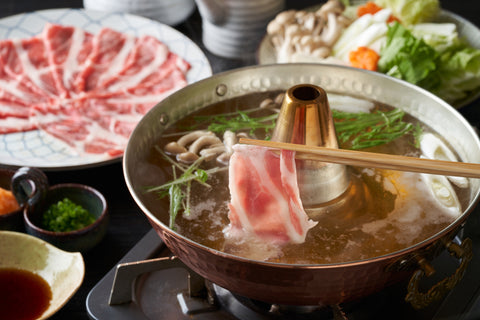
These are two of the most popular meat-based Washoku dishes. Shabu shabu is a hot pot dish of thinly sliced beef and vegetables are cooked in hot water seasoned with kombu kelp. Sukiyaki is similar to Shabu-Shabu, but the beef and vegetables are cooked in a sweet soy sauce broth, and the meat is often dipped in a raw egg.
Washoku And UNESCO
In 2013, Washoku was added to UNESCO's list of intangible cultural heritages. UNESCO defines Washoku as a "social practice based on a set of skills, knowledge, practice, and traditions related to the production, processing, preparation, and consumption of food,” recognizing the social customs that have been passed down in Japan over thousands of years.
Different Types Of Washoku
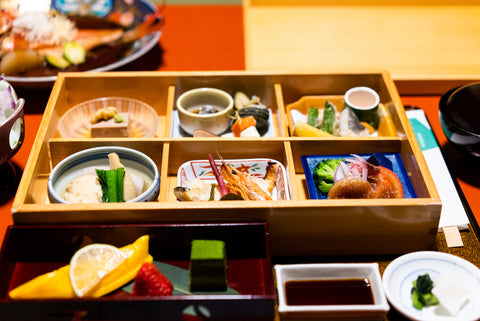
Washoku is an all-embracing title for a number of different food styles, and the type you enjoy may differ according to the occasion, your circumstances, and your budget.
Casual Dining
If you are on a low budget, or alternatively, are just in the mood for something quick and simple, there are a host of stand-up noodle joints, beef bowl bars, and Yakitori (skewered chicken stalls for you to enjoy Washoku. Prices in many cases are only several dollars for a delicious and filling meal.
Kaiseki Cuisine
This is at the other end of the spectrum in terms of price and formality. Kaiseki is characterized by a large number of small dishes laid out in a beautiful arrangement, which allows you to try a breathtaking number of flavors in a single meal, as part of a luxurious dining experience. See this article for more information.
Shojin Ryori
Shojin Ryori is traditional Buddhist fare, and its simplicity, the way it eschews waste, and relies on the flavors of foods that are perfectly in season embodies the true spirit of Washoku. As meat and animal products are not used, it is also very popular with vegans visiting Japan. See this blog post for more information.
Washoku vs Yoshoku

This article has taken a close look at Washoku. Yoshoku is another type of food made and served in Japan. Translating literally as “Western food”, it consists of Japanese adaptations of Western dishes and is a style of cooking merged to fulfill a need to incorporate Western dishes into Japanese food culture while making them palatable to Japanese people at the same time. For example, although there are a large number of Indian curry restaurants in Japan, Japanese curry, in terms of Yoshoku, is something distinctly Japanese, which is thicker and sweeter than its Indian counterpart.
Although both Washoku and Yoshoku are distinctly Japanese, the resulting dishes are very different. For more information, on Yoshoku, check out this article.
Washoku – More Than Just Food
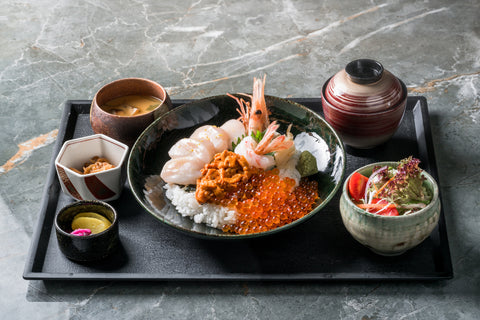
As I hope you will have gotten a sense of from this post, although the word literally means “Japanese food”, Washoku is more than just a culinary description and embraces a whole range of concepts that are distinctively Japanese, including presentation, seasonality, and kinship with nature. These ideals, as well as the delicious food, have caused a surge in interest in Washoku in other countries as well.
What do you find most interesting about Washoku? What is your favorite dish? Let us know in the comments.


0 comments